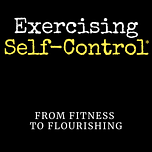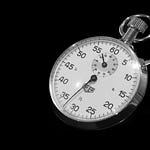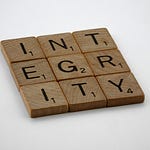Right now, someone is lying awake replaying a decision they made five years ago. Someone else is beating themselves up over what they said in a meeting this morning. The regret feels different but the mental trap is identical.
You know this trap. It’s that familiar spiral where your mind rehearses alternate histories: If only I’d taken that job offer. If only I’d spoken up sooner. If only I’d started investing when I was 25. The scenarios feel so vivid you can almost taste the life you “should” be living.
But here’s what nobody tells you about regret: it’s not actually about the past. It’s about feeling powerless in the present.
The good news? You’re not powerless. And I’m about to show you exactly how to prove it to yourself.
Hey there. It’s me, Kore. And you’re listening to Exercising Self-Control: From Fitness To Flourishing.
Every day brings moments where we wish we’d made a better choice. Or at least what we think would have been the better one. This can be a choice from moments ago to as far back as we can remember. Regardless how long ago it was, here’s a framework to make things better in this moment.
The No-Regret Reset
Fully accept that you can never have chosen differently. Own your past choices.
Why this matters: You made the best decision you could with the information, resources, and understanding you had then. Self-blame and regret wastes energy that could fuel a better choice now.
Common unhelpful thinking: “But I knew better” or “I should have seen the signs.” This ignores how different your perspective was in that moment.
Assert that you can always choose differently now. Assess your current options.
Why this matters: Even in highly limiting circumstances you retain agency and have choices. Identifying available paths prevents learned helplessness.
Common unhelpful thinking: “I’m trapped” or “It’s too late to change.” This overlooks creative alternatives and incremental progress.
Grasp that your most important choice is your next one.
Why this matters: This moment is the only place from which you can direct your current experience and influence the unfolding consequences. Future planning and past analysis only matter if they inform immediate action.
Common unhelpful thinking: “I need more information” or “I’m not ready yet.” If you endlessly research options without committing, or waiting for the “perfect” moment, you extend the unwanted consequences of your last choice. The longer you delay choosing, the more mental energy you drain, making your eventual decision less optimal.
Enact your choice.
Why this matters: Ideas without action remain fantasies. Even the most imperfect action generates new information and momentum.
Common unhelpful thinking: “What if this doesn’t work?” or “This has to work.” Perfectionism, fear of failure, or wanting guarantees before moving forward will keep you stuck right where you are.
And, after all that deliberation, if you wish you’d chosen differently again? Go back to #1. This is your power. Use it.
Two Examples
Let’s see how this plays out with a couple of examples.
This first one demonstrates using the framework for a choice made 10 years ago.
Consider Alice, facing a career pivot at 35: She regrets staying in marketing for a decade instead of pursuing graphic design (#1 - she made the best choice she could with her circumstances then). Now she’s considering three possibilities: evening design classes, a career bootcamp, or freelancing on weekends (#2 - assessing current options). She recognizes that overthinking won’t change anything. Her next decision changes her direction (#3). She enrols in the weekend class and completes her first assignment (#4).
Six months later, when progress feels slow and she questions this path, she returns to #1: she chose the evening design classes from well-reasoned thinking and can now assess her evolved options from this new position.
This second example demonstrates using the framework for a choice made moments ago.
Consider Devon, noticing he’s reaching for a fourth cookie: He realizes he told himself he’d only eat two as a treat while out with his son. (#1 - he let himself get carried away while relaxing and having fun). Now he sees the right choice: stop at three, forgo any blame or self-bashing, and continue enjoying the day with his son. (#2 - assessing his options). He’s aware of his lapse of attention and knows his next choice is important. (#3 - he recognizes his power in the moment). He slides the box over to his son and smiles. (#4).
Photo by Conor Brown on Unsplash
The Purpose Of Using The Framework
The framework isn’t about coming up with the perfect choice once and for all. It’s about moving forward with a better choice. This better choice is dependent on the current available information, resources, and the understanding you hold right now. That’s always going to be the conditions in which you make the most excellent choice.
In retrospect you’ll have a more informed perspective and be able to make an even better choice. And so it goes. This is a loop of progress. Ideally it’s a virtuous cycle that keeps spiralling upward. There’s always the possibility you make a worse decision.
Even given that you go back to #1 and begin again. That’s life: choices and consequences. You get to make the choices; the consequences unfold as they may.
The next time regret whispers ‘what if,’ remember: every moment offers a choice between staying stuck in yesterday’s decisions or stepping into tomorrow’s possibilities. Your past shaped you but your next choice shapes everything that follows.
What will you choose?
That’s it for today. Catch you next time.












